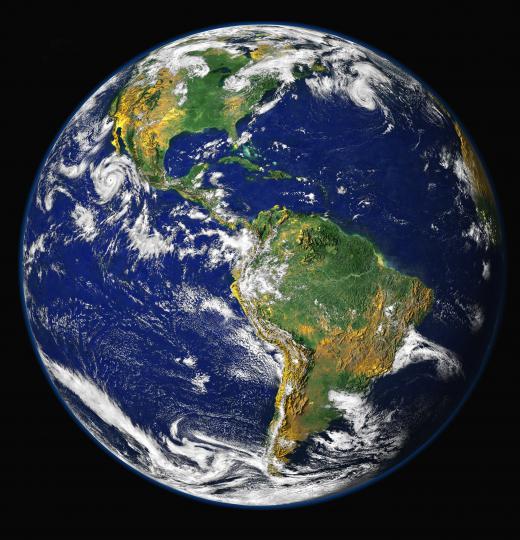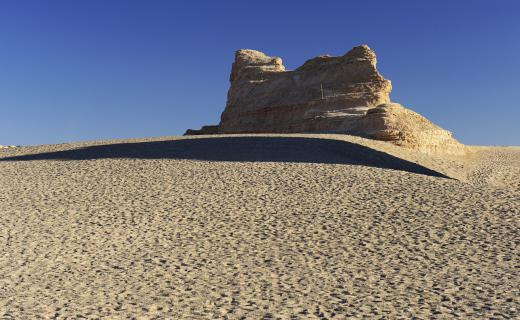How Old are the Oldest Rocks on Earth?
 Michael Anissimov
Michael Anissimov
As of 2008, the oldest rocks on Earth known are 4.03 billion years old, from the Acasta Gneiss in the Northwest Territories of Canada. These rocks were found in the Canadian Shield, a very ancient section of the Earth’s crust. Originally the rock was part of a very old mountain chain, the core of which was exposed over billions of years due to glacial activity. The rock formed during the Hadean period, the oldest geologic division of time on Earth, which began at the planet’s formation 4.57 billion years ago and continued until the dawn of the Archean, 3.8 billion years ago. Many of the world's oldest rocks are from this era.
Other extremely old rocks have been found in Western Greenland and Western Australia. These are about 3.8 billion years old at most, and their age is used as the dividing marker between the Hadean and Archean eons. The continental crust as a whole is quite old, with ages in the billions of years. This is quite different than the oceanic crust, which is continuously recycled through subduction zones and has an average age of only 100 million years.

Even older than the Acasta Gneiss are individual zircons from the Jack Hills in Australia, dated to 4.4 billion years ago. These are the oldest rocks, which formed only 130 million years after the formation of the Earth itself, and represents when the crust first began to cool. The Earth was initially in an entirely molten state and only cooled down once the energy from its contraction dissipated – these zircons represent that first cooling. A controversial aspect of the Jack Hill discoveries is that the zircons appear to have formed in the presence of liquid water, which was previously not thought to exist on the surface of the Earth until about 3.8 billion years ago. So it turns out that the oceans might be much older than we suspected, although the analysis here is controversial.

It is thought that less than 7% of the world’s continental rock is older than about 2.5 billion years. Although the continents are relatively stable, they are regenerated over time due to volcanism and erosion on massive scales. The heat flux on the Earth’s surface in very ancient times was about three times what it is today, leading to a rapid recycling of crustal material. More research will be necessary to uncover more of the oldest rocks and use them as clues for conditions that existed in the earliest era of our planet’s history.
AS FEATURED ON:
AS FEATURED ON:












Discussion Comments
My grandpa said the earth's age is as the same as the moon.
black stone in mecca is the oldest stone and not from our solar system. Three of the rocks in the british museum.
While many people try to use rock age to determine the age of the earth, I'm not sure I personally believe this will ever be something we can totally determine. It is not because I don't believe in evolution, a large part of me does, I just don't really think science can account totally for some of these details.
Post your comments